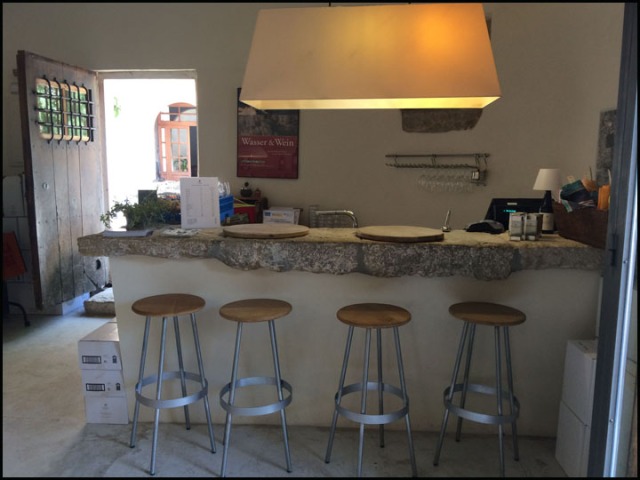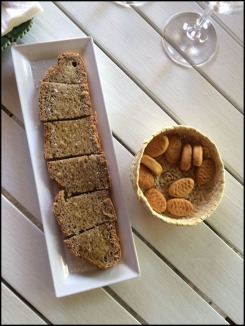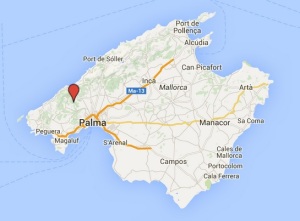“Following the moon’s cycles, superb organic wine from Manacor.”

www.vinstonigelabert.com
+34 971 55 24 09
Manacor, Mallorca, Spain
Toni of Vins Toni Gelabert is a 1st generation winemaker. Registered with D.O. Pla i Llevant the Consell de la Producció Agrícola Ecològica de Balears, Vins Toni Gelabert produces 30,000 bottles per year from biodynamically and ecologically cultivated vines and grapes. In August 1996 he planted his first vines. In 1997 they built their bodega and processing facility according to Feng Shui. In 1979 they sold their first red, and in 1981 they sold their first white. They have seven hectares of grapes planted. The red varietals they grow are Manto Negro, Callet, Syrah, Prensal Blanc, Cabernet Sauvignon, Pinot Noir, and Merlot. Their white grapes are Chardonnay, Riesling, Viognier, and Macabeo (Macabeu in Mallorquin, and on the label) for their Cava. They are a progressive winery with a style of the traditional Mallorca we love!

This was our second try at Tasting here, the first time was the same day as we went to Vins Miquel Gelabert = his brother’s winery (Please see our visit to Vins Miquel Gelabert!). That time Toni had to cancel for real life reasons, so this time he kindly allowed us to tag along with a group of six fun German women who were visiting Mallorca. They had booked in advance a €20 ‘cata de vins’ = wine tasting, of six different wines paired with Toni’s homemade Sopresada sausage on rustic Pan Moreno (brown bread) with Menorcan Cheese – we thought, why not?!

Vins Toni Gelabert is a gem of a bodega because they follow the moon’s cycles. Biodynamics is a method of organic farming involving observation of lunar phases and planetary cycles which correspond to the plants cycles, and it is very time consuming. You have to be very observant and aware. During our visit we commented about how the summer has been extremely hot with very little rain. He pulled out his calendar and told us it didn’t rain in April, and that the last day it rained was May 24th — and we were in August! They plant the grapes at the correct time, prune and pick the grapes by the moon cycles. Their picking process is usually done somewhere around the 15th of August. This year they picked around the 25th because of the moon’s stage.

Like a few other winemakers we’ve discovered, they choose or select the grapes right on the vines. They make as many as five passes to remove the less desirable grapes, until all that remain on the vine are good, which are then collected and used. The bottling schedule is also done in accord with the moon, and if it needs to be done on Sunday, then Sunday it is. Toni says it is more work, but from the heart. He told us he considers winemaking as an art like making music and cooking. He said he is all at this winery, and nothing. Not an Oenologist, he is self-taught through providence, study, love of wine, trial and error.
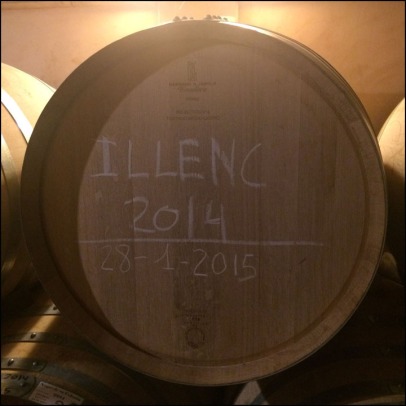
This bodega has been carefully thought out all the way down to the orientation of the building. They called in experts from Palma who specialize in Feng Shui (A Chinese system of spatial arrangement and orientation regarding the flow of energy (qi), and whose effects are considered when siting and designing buildings and room or garden lay-out) and Dowsing (finding the water underground). After their recommendations, Toni built the house a little on an angle to the plot layout, in order to keep the light and flow of energy the best for their developing wines. However, like Toni says: When you follow the moon or Feng Shui, these are suggestions, but you make the final decision about what feels right. We’ll say that all the energy put into building and grape work can be found in the results of his wine: Delicious!!
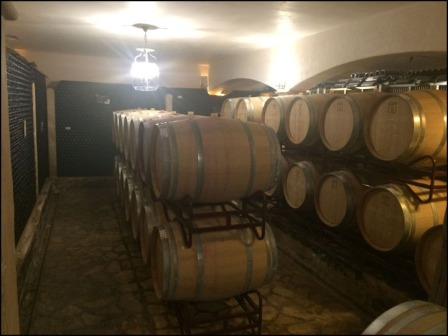
After harvesting his grapes, Toni ferments the majority of each different variety in it’s own unique tank, and the blending is done afterwards. There is a wine or two where he mixes the grapes and then ferments (which we finally learned is called co-fermentation, as opposed to blending where separate wines are blended into a cuvée, or batch, after fermentation). Toni makes about 15 different bottles of wine, but not all the bottles are made every year; if the grapes aren’t exactly what he wants that year, then he doesn’t make the corresponding wine. That is dedication.
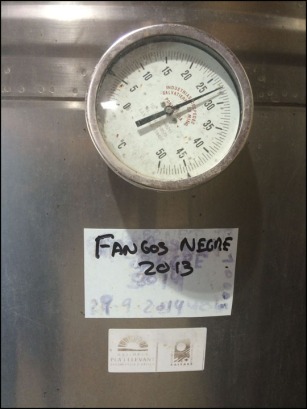
All the bottles have very different labels and names. At first, every year the label changed according to Toni’s choice of art or picture, which really spoke to that wine and that vintage; it was part of the labor of love. However, eventually Toni saw the marketing advantage in making a brand name. Now, there are two lines if you would: The Son Fangos, and the Torre des Canonge. He started experimenting making whites in 1981, and feels that his whites are the strong point of his bodega, however, we feel that all his wines are recommendable!

We arrived and Toni gave our group a talk about the different grapes he grows, and where they are outside the bodega. Then we were shown the fermenting tanks and explained how he ferments. Next he took us down to the barrel room, which is somehow always our favorite! We got to see the barrels that he has brought in for this year’s harvest, and the beautiful quality of light and energy there.


We were able to ask all the questions we wanted to, about Biodynamics and varietals, and then he took the group to a rustic kitchen for our tasting. We all sat down at his table, with an old barrel underneath, and Toni began to pour! Please see our tasting notes for wines tasted at Vins Toni Gelabert.

As we tasted, and our questions poured, Toni told us that all their red wines are kept one year in oak, and that the older the grape, the softer the tannins – a nice way to put it. Their whites are only 4-5 months in oak. They only use old French oak barrels, often burnt on the inside for flavor which he called ‘tostado negro.’ They produce 5 whites, 1 rosé, and 7 reds. Every year the grapes are different, so his wines are different blends to get a finished product he thinks is worth selling. The wines are 80% consumed locally, and 20% for export. They used to sell by Internet, but it was too hard because of customs. Now they only sell through distributors. He also told us that they buy cork from Gerona and Asturias, Spain. And he explained about Batonage – done with a special wand – which is a circulation process that keeps the yeasts in suspension in all wines in oak, and keeps the healthy amino acids active.
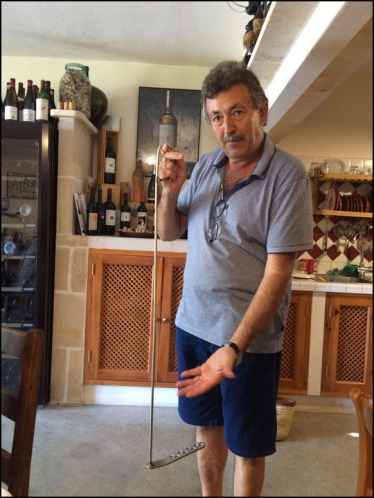
This was a different experience for us as we usually do the tour and tasting by ourselves… one-on-one with the owner, family, or trained employee. We thought it would be fun to try something different to join the tourist group, and it was enjoyable because our group was lively. However we would have preferred to do our typical one-on-one with Toni because he was such a wealth of information! The biggest drawback was that the lovely ladies we were with spoke mostly German, and we conversed in English; and Toni doesn’t speak either German or English… so he missed out on interacting with us more… That said, we felt we missed out on his interaction and information – and he was the star!

A side note about the Gelabert brothers: although they have the same last name and some similar traits like experimentation and innovation, their winemaking histories traveled different paths. Toni’s vineyards come from his wife Maria’s family. It was her father’s land where the bodega is built, and where they have 90% of their vines. Whereas, Toni’s brother Miquel took over the vines of their father, who had always sold his grapes to other bodegas. Two brothers – two lovers of wine – two histories: two Must Stops on our beloved Mallorca Wine Trail!

Directions: 
Driving from Manacor to Felanitx, at about 2km on the road you will see a pullout or park-like area, slow down. Immediately after that you will see a very narrow road on the right and a small yellow sign that reads Vins Toni Gelabert. Follow that sign through a few turns and you will see the bodega on the left. When you drive along the driveway you’ll have Chardonnay grapes on your right and the newly planted vines on your left. Beautiful!
See Wines Tasted at Vins Toni Gelabert: Click here
### Vins Toni Gelabert ###
































